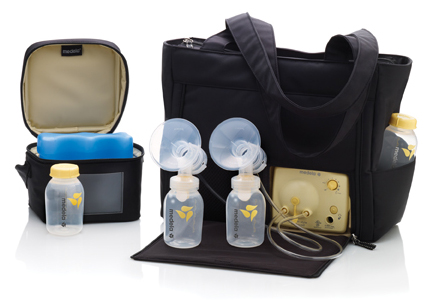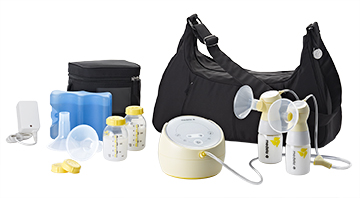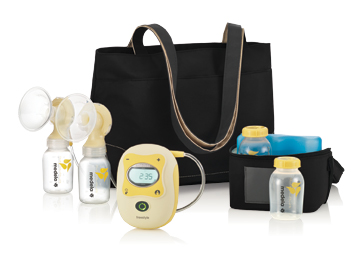Breast Pump FAQ's
How To Properly Clean Your Breast Pump And Accessories
Regularly washing and sanitizing your breast pump is essential for a healthy and safe pumping experience for mom and baby. Here are our guidelines on how to properly clean your breast pump.
How do I get started?
Wash your hands before touching your breasts, handling your breast pump, and cleaning parts and accessories.
Do I need to clean my breast pump parts before first use?
Yes! Make sure to wash and sanitize your breast pump parts and bottles before you use them for the first time.
How often should I clean my breast pump parts?
You should wash your breast pump parts and bottles after each use, and sanitize once a day after they’ve been washed.
What parts do I clean?
The quick answer is – almost everything! Every part of the breast pump that touched your breast or the milk should be thoroughly cleaned after each use – including breast shields, breast milk bottles, bottle lids, valves, membranes, and connectors. This helps you avoid dried breast milk residue and prevent growth of bacteria.
Only wash the tubing if you see residue or condensation in it.
How do I wash my breast pump parts?
There are two ways you can wash your breast pump parts: in the dishwasher, or in your sink.
- Dishwasher: You can wash all separated parts on the top rack of your dishwasher and allow them to air dry in a clean area. Using the dishwasher may cause your parts to become discolored, but don’t worry – this won’t impact how they function.
- Wash Basin in Sink: You can also wash your breast pump parts in the sink – as long as you use a large bowl or wash basin reserved only for your breastfeeding supplies, and make sure to never let them touch the sink directly. Rinse all separated parts that came in contact with breast and milk in cool water first, then soak them in warm, soapy water for 5 minutes. To simplify your daily cleaning routine, keep Quick Clean Breast Milk Removal Soap at hand. Wash each part with a clean dish cloth or soft brush and rinse all separated parts with clear water.
Additionally, our Quick Clean Breast Pump and Accessory Wipes offer another easy way to clean on the go! You can wipe down the body of your breast pump with the Quick Clean wipes or a damp cloth.
Whether you choose to clean your pump parts in the dishwasher or wash basin, make sure to place them on a clean surface or towel and allow them to air dry. Store dry parts in a clean, cool place when not in use.
How do I sanitize my breast pump?
Although you should wash your breast pump and its parts after each use, you don’t have to sanitize as often. We recommend sanitizing your parts and accessories once a day after they’ve been washed.
- Boiling Method: First, separate all parts that come in contact with breasts and milk, and wash hands thoroughly. Fill a pot with enough water to cover all parts and bring water to a boil. Once the water’s boiling, place the parts in for 10 minutes. Allow water to cool and gently remove parts from water with tongs. Once you’re done sanitizing, place parts on a clean surface or towel to allow them to air dry. As always, store your pump parts in a clean and cool place when not in use.
- Steam Method: Follow the instructions printed on the Quick Clean Micro-Steam Bags. These bags allow you to disinfect breast shields, accessories, bottles, nipples, pacifiers, and cups in approximately 3 minutes for quick and easy end-of-day sanitizing.
For a fast, easy, and safe way to sanitize your breast pump parts, you can try our new Quick Clean Breast Pump & Accessory Sanitizer Spray that eliminates 99.9% of bacteria and viruses with a no-rinse solution. It contains no harsh chemicals, fumes, bleach, dyes, or alcohol, making it completely safe for mom and baby. Although this product does not replace regular cleaning or sanitizing guidelines, it’s a great option for extra protection from unsanitary environments.
Check out the most recent Centers for Disease Control and Prevention guidelines on cleaning your breast pump and find more information on different Medela products in our instruction manuals.
Lastly, don’t feel bad about asking for help! See if your partner can help with cleaning breast pump parts after you’re done using them.
Now let’s get to it!
Courtesy of medela



